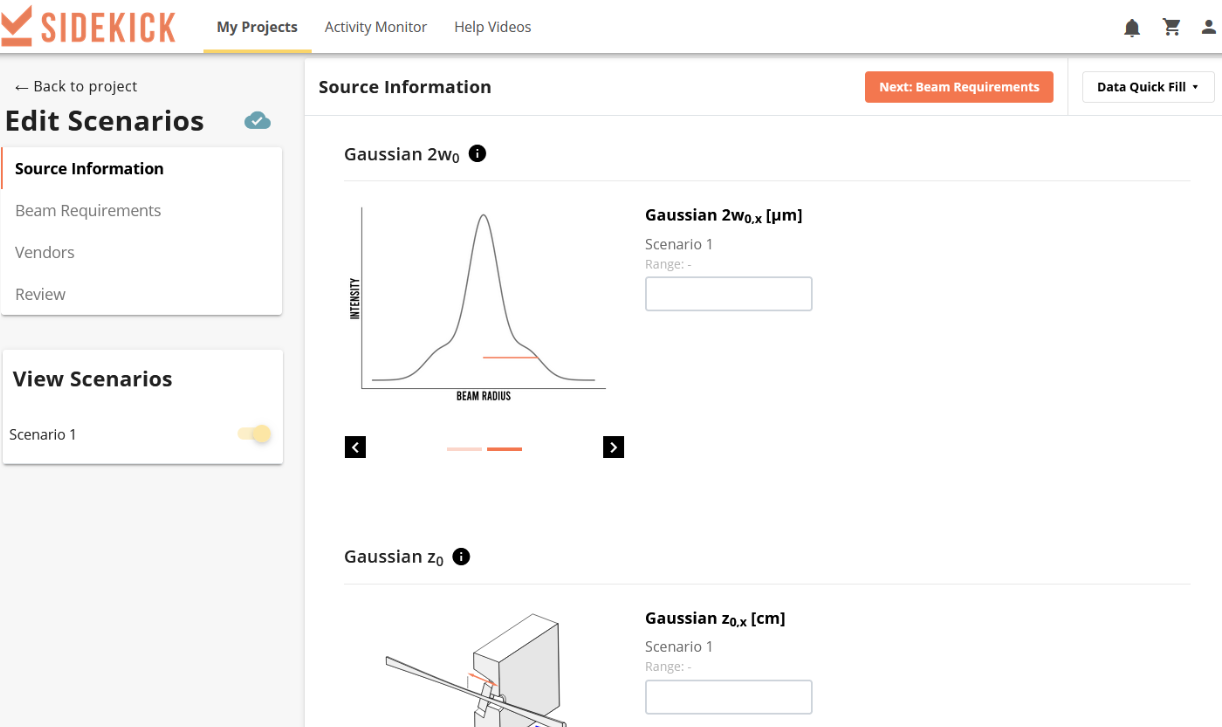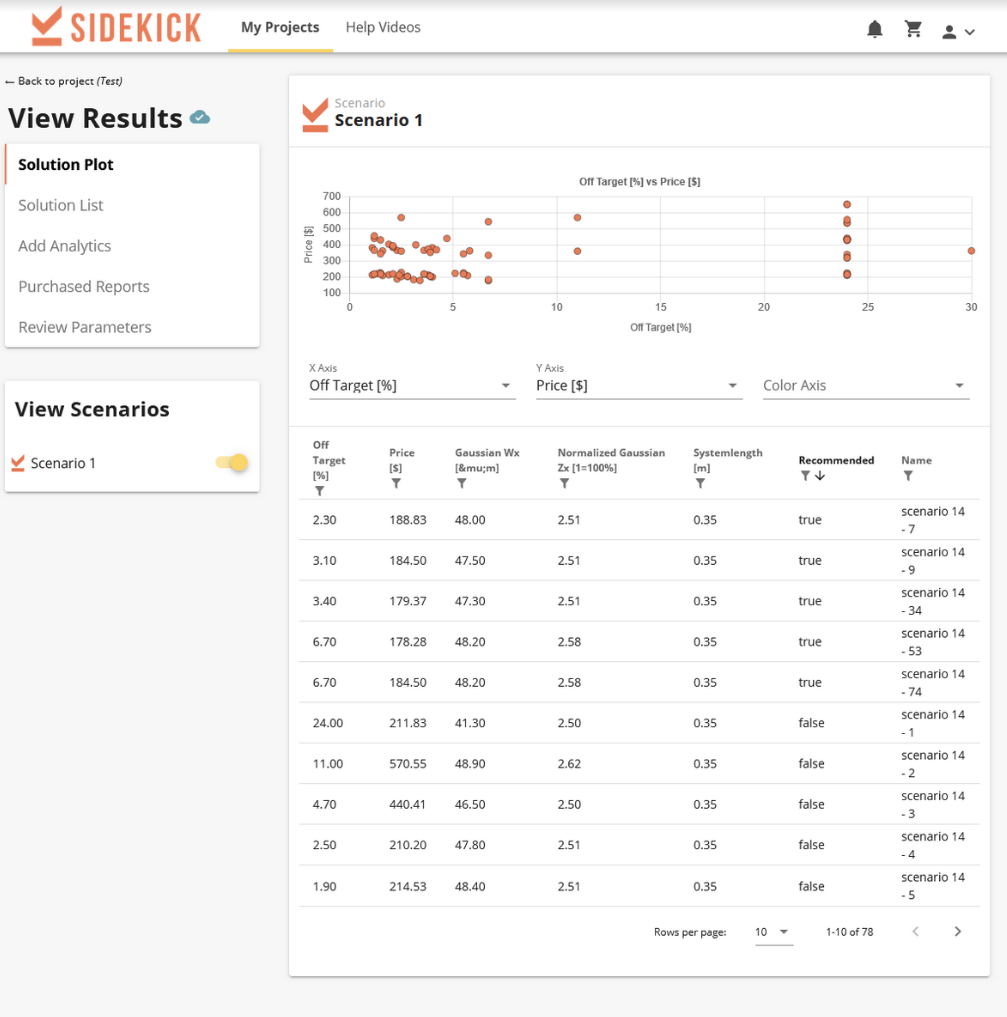Solution Engine
To stay competitive and efficient, technical teams need software that dramatically reduces engineering burden.
Software that solves problems
We have developed the first solution engine for optical engineers. Our solution engine eliminates the need for engineers to spend time surveying online part catalogs, looking up reference materials, and iterating on different component combinations. Instead they can focus on interfacing with project stakeholders, collaborating on key requirements or running experiments.
Here are the key features of our innovative solution engine.
Clear terminology
Meeting performance requirements is only possible if both the user and the solution engine have a shared understanding of what each requirement refers to. Our engine clearly and visually defines each performance requirement within the workflow.
Understand design intent
It is imperative that the solution engine understands the outcome the user is looking for. Most optical design software requires the user to manually model each component, as well as the figure of merit for the design. Our engine removes that burden by determining what the engineer is looking to accomplish and what components they are required to use.
Specify performance
After the desired outcome has been adequately defined, the user needs to enter the numerical values that specify the performance of the design. We have found that the ordering of these values is critical to minimize the amount of information required from the user before the engine starts providing useful feedback.
Feasibility analysis
As performance values are entered, our engine flags value combinations which are infeasible, drastically reducing wasted effort on the part of the user. There are many reasons why a specific performance request might be infeasible, and so our engine helps the user identify and resolve the issue.
Component sourcing
Our engine has the flexibility to design either custom, or off-the-shelf components. Off-the-shelf components are usually cheaper and easier to obtain, but can be at the cost of reduced performance.
Solutions and trade-offs
Once the key feasibility hurdles have been cleared, our engine generates a set of design options with different cost/performance values. These option sets are pareto-efficient, helping to clarify the cost/performance trade-offs within their requirements. This enables the user to understand the trade-offs as they increase or decrease performance requirements.
Iterating on requirements
Performance requirements translate directly into cost and complexity of implementation. Without iterating on the design requirements it is difficult to understand if particular performance requirements are disproportionately impacting the resulting cost. Our solution engine is cost effective to use iteratively, and straightforward when tweaking single performance parameters.
Clear documentation
Engineers don’t like generating documentation, but our solution engine can help. It is straightforward for our engine to generate BOMs, layout diagrams, prints, tolerance analyses and more, because the engine understands the design intent, boundary conditions, and assumptions built into the solutions it generates
Low-friction implementation
A common problem with existing optical design software is the large amount of friction in acquiring, running and learning the software package. In contrast, our engine runs in the cloud, boasts a shallow curve and comes with simple pricing which can be justified to engineering management.




